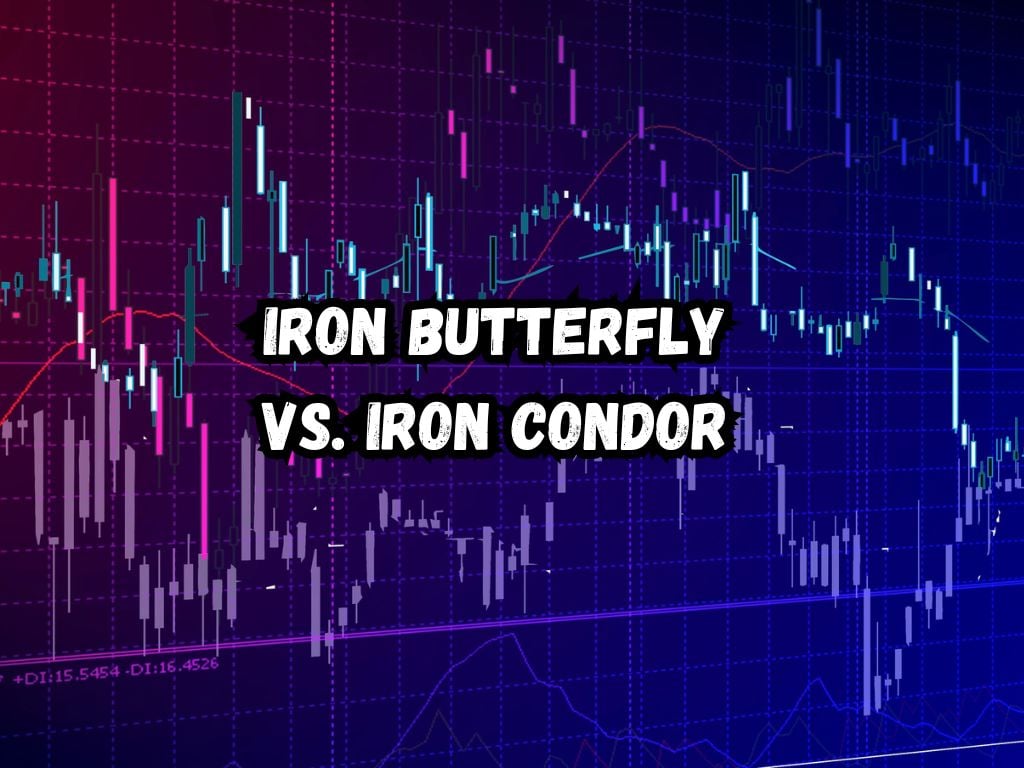Options trading offers a variety of strategies for investors. Among these, the Iron Butterfly and Iron Condor strategies stand out. These strategies can help traders navigate different market conditions.
This article dives into the intricacies of both strategies, comparing iron butterfly vs iron condor to help you make informed decisions.
Understanding Iron Butterfly
The Iron Butterfly strategy involves four options. It combines a bear put spread with a bull call spread. The goal is to profit from low volatility in the underlying asset. This strategy has a limited risk but also a limited profit potential.
Traders use Iron Butterfly when they expect the market to be calm. The key is the strike price being close to the market price. This strategy shines in a stable market. It caps both the potential loss and gain.
Understanding Iron Condor
Iron Condor is another strategy built for low volatility. It too involves four options. However, it spreads across a wider range of strike prices. This setup aims to capture premiums from options that expire worthless.
The Iron Condor is more forgiving than the Iron Butterfly when the market moves. It has a wider profit range but also limits gains. This method suits traders looking for steady, predictable returns. It matches well with a market showing slight fluctuations.

Iron Butterfly vs Iron Condor: Key Differences
Comparing Iron Butterfly and Iron Condor reveals crucial differences. The risk and reward vary between them. Iron Butterfly offers a higher potential return but at a higher risk. Iron Condor provides more breathing room for market movements.
Market conditions play a pivotal role. Iron Butterfly works best in a very stable market. Iron Condor adapts better to slight ups and downs. The spread width is also crucial. It impacts the potential profit and risk level. Iron Butterfly tends to have a narrower spread.
Selecting the Right Strategy for You
Choosing between Iron Butterfly and Iron Condor depends on several factors. Market outlook is primary. Your view of future volatility guides the strategy choice.
Risk tolerance is another critical aspect. How much risk you can stomach affects your decision. Your trading capital also influences the strategy selection.
Each trader needs to assess their situation. Understanding your comfort with risk and market expectations is vital.
Both strategies require a hands-on approach. They demand monitoring and adjustments based on market movements.
Market Forecasting
When it comes to options trading strategies like the Iron Butterfly and Iron Condor, anticipating market movements can significantly impact profitability.
An integral component of this forecasting is understanding and utilizing volatility indicators.
Volatility Indicators
Volatility indicators are crucial tools for determining the best strategy to employ. Instruments such as the VIX—CBOE Volatility Index—serve as the market’s “fear gauge,” providing insight into the expected volatility of the market.
A high VIX suggests high volatility, hinting that an Iron Condor with its wider profit range could be more appropriate. Conversely, a low VIX indicates low volatility, making the Iron Butterfly, with its potential for a higher return in stable conditions, potentially more suitable.
By monitoring volatility indicators, traders can assess the likelihood of significant market swings. Strong awareness of these metrics allows for adapting strategies to market conditions, which can mean the difference between a trade being profitable or not.
Market Sentiment Analysis
Market sentiment analysis is another aspect that can aid traders in choosing the right strategy. This analysis encompasses the overall attitude of investors towards a particular security or the financial market.
Sentiment can be gauged using news analysis, investor surveys, and other sentiment indicators. Bullish sentiment often correlates with lower volatility while bearish sentiment might indicate the possibility of increased volatility.
Understanding the prevailing market sentiment can help traders anticipate market trends and select the appropriate strategy. For instance, if market sentiment is indicating uncertainty or potential downturns, traders might lean towards the more risk-averse Iron Condor strategy to give themselves a broader range to capture profits.
In summary, successful options trading partly lies in predicting market movements. By incorporating volatility indicators and market sentiment analysis into their decision-making process, traders can choose between the Iron Butterfly and Iron Condor strategies more effectively, aligning their positions with their market outlook and risk tolerance.

Frequently Asked Questions
What is the main advantage of using the Iron Butterfly strategy?
Iron Butterfly’s main advantage lies in its potential for high returns in a stable market. It suits traders with a precise market outlook.
How does an Iron Condor strategy mitigate risk?
Iron Condor spreads risk across a wider range of strike prices. This distribution mitigates risk by allowing a larger margin for market movements.
Can Iron Butterfly and Iron Condor strategies be used simultaneously?
While possible, using these strategies together needs careful planning. They serve similar purposes but with different risk profiles.
Which strategy is more suitable for beginners in options trading?
Iron Condor might be more beginner-friendly due to its wider profit margin. However, both strategies require an understanding of the market and options trading.
Conclusion
Both Iron Butterfly and Iron Condor offer unique advantages for options traders. The choice between them depends on market conditions, risk tolerance, and trading capital. These strategies can enhance your trading approach in low-volatility environments.
This guide aims to equip you with the knowledge to choose the right strategy. As always, consider each factor carefully before making a decision.
Exploring these strategies with a clear understanding of the risks and rewards can lead to successful trading.


 Tags:
Tags:










